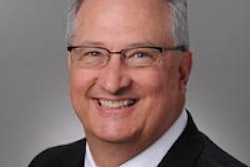
One of the most frustrating insurance questions is what to do when your patient needs limited scaling and root planing, but the rest of the mouth is pretty healthy. This frequently discussed situation never seems to be resolved, because insurance companies can't agree on an answer.
 Doyle Williams, DDS.
Doyle Williams, DDS.Let's start by describing a common diagnostic finding:
- Patient presents to your office after irregular dental visits in the past.
- Patient has some areas of bleeding on probing in the molar areas of one or more quadrants with bone loss.
- Much of the patient's mouth has what the doctor describes as healthy tissues.
Realizing that there are several differing opinions among insurance carriers, I will present what I think is the most commonly accepted policy surrounding this situation. The 4000 series of codes in the Code on Dental Procedures and Nomenclature (CDT) manual refers to periodontal treatment of periodontal disease. There are codes for partial and full quadrants of scaling and root planing along with a periodontal maintenance code. In the 1000 series of codes, we find the prophylaxis codes that are for treating healthy patients (the absence of periodontal disease).
“One of the most frustrating insurance questions is what to do when your patient needs limited scaling and root planing, but the rest of the mouth is healthy.”
Note that the 1000 series codes do not have quadrant specifications, as they are intended to be used for the entire dentition that is present. The situation described above could be treated with the D4341 and D4342 codes for the areas with periodontal disease. Treating one or more teeth in a quadrant does not preclude the dentist from performing a limited prophylaxis on the remaining teeth in the quadrant for maximum health. Following the treatment of the periodontal disease, the periodontal maintenance code is appropriate for treating other nondiseased areas of the mouth.
Confusion results when the dentist treats the periodontally diseased areas and then finishes with the prophylaxis code. It should be evident that these two codes are contradictory. However, the above described patient may improve significantly over time and return to a nondiseased state, at which time they could be treated using just the prophylaxis code.
Doyle Williams, DDS, spent 24 years as an insurance executive.
The comments and observations expressed herein do not necessarily reflect the opinions of DrBicuspid.com, nor should they be construed as an endorsement or admonishment of any particular idea, vendor, or organization.



















